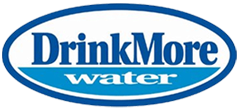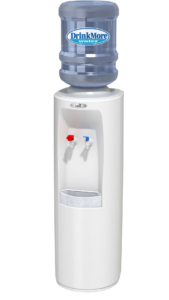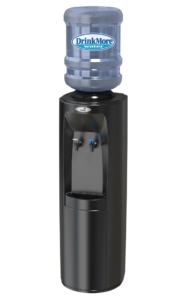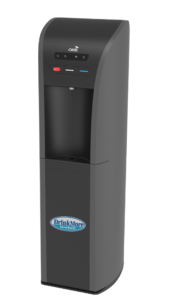Are you looking to understand why purified water is your best option in the DMV area? We have outlined the processes of the most common types of water available so that you can see why purified water from DrinkMore Water is your best option in Maryland, Virginia, or Washington, DC.
Contact us online to learn more about our purified water services.
Tap Water
In the Washington, DC area, our tap water comes from the Potomac or Patuxent Rivers. This water is process with basic filtration techniques like flocculation, which adds chemicals to the water to get particles to coagulate and float so that they can be removed; sand filtration, which filters out large pieces of debris; or chlorination, which adds chlorine to kill bacteria and microorganisms.
Despite tap water being considered drinkable by the EPA, it can lead to numerous problems. For one, chlorine is not ideal for human consumption—while our bodies can technically handle it, chlorine can lead to a variety of health complications and is potentially carcinogenic (leads to cancer). There is also a risk of lead in tap water due to lead being present in the pipes that bring tap water to your home.
DC tap water ranges from 200 PPM to 400+ PPM in TDS (total dissolved solids), which measures the concentration of soluble impurities in pure H2O. It has such a range of quality due to water temperature (warmer water is better for dissolving things), water flow, runoff, time of year (fertilizers, which are predominantly used in the spring, can leach into fresh water), and more.
Tap water is the cheapest water option available, but as you can see, it comes with a number of compromises. If you’re concerned about additives and chemicals in your food, then you should be just as particular with your water choices.
Spring Water
Spring water is often mistaken for being equal or interchangeable with purified water. However, spring water often contains many of the same impurities found in well or tap water. In fact, since springs feed our rivers, there is a lot of spring water in our tap water! Spring water generally has the same TDS range as tap water.
Many spring water companies advertise their water as “100% pure—” but if it’s not purified, what does that mean? The “pure” part actually refers to the source, not the water itself—in that 100% of that bottle’s contents came from an underground source (rather than surface water). This clever wording leads many people to believe that spring water is just as clean as purified water.
Thanks to this crafty marketing, spring water often conjures up natural, pleasant imagery. In reality, most spring water is not actually bottled at the source, but rather, is pumped into large tanker trucks from the source to be transported to the bottling facility. The water in those trucks must be chlorinated or ozonated at all times to protect against contamination. In this sense, spring water is hardly different from tap water, since it is largely treated the same way. Once the water is at the bottling facility, it goes through a carbon filtration process to remove the chlorine. This process may separate spring from tap water, but nitrates, metals, and more are likely to remain.
Distilled Water
Distilled water is processed by boiling H2O out of its contaminants. Many of said contaminants include inorganic minerals or metals. Those impurities have a much higher boiling point than water’s boiling point of 212 degrees Fahrenheit. So, the steam that results from the boiling is captured and cooled—and the water that results from the steam is what is classified as distilled water. Because many of the volatile compounds in water have a lower boiling point than water, they boil off first. As a result, it is important to employ additional purification methods beyond distillation in order to have truly clean, pure water.
Filtered Water
Filtered water is what you are most likely to find in a grocery store. It is typically sourced from municipal tap water, which is then run through carbon filters to remove the chlorine (which improves the taste) and sometimes a micron filter as well. After the filtering, it is ozonated and bottled. In essence, filtered water is quite similar to spring water. It comes from a “natural” source, goes through minimal filtration, and is then bottled and shipped to market.
Purified Water
The source of purified water isn’t what makes it the best choice on the market—it’s the purification methods that separate purified water from the rest of the pack. Purified water goes through a process similar to what filtered water goes through, but with a few added steps like reverse osmosis, distillation, or deionization. The end result is far purer than filtered, spring, or tap water.
Thanks to our 12-step purification process, our water is guaranteed to be the same high quality every time, regardless of variations in the source water’s quality. For this reason, purified water is viewed as the objective benchmark against which the purity of other waters is judged. If you want guaranteed purity and taste, choose purified water.
Schedule Purified Bottled Water Delivery in MD, DC, or VA
If you are looking for the cleanest, purest water on the market, look no further than DrinkMore Water. We have perfected our 12-step purification system and are constantly updating our processing plant with newer and better technologies so that we can continue to guarantee our purity and taste. We truly care about your satisfaction with our water and will never stop improving our process.
Contact us online to schedule bottled water delivery in Maryland, Virginia, or Washington, DC!



